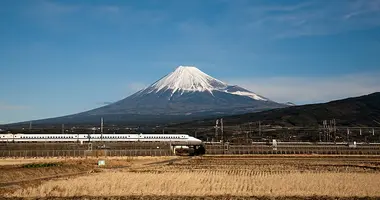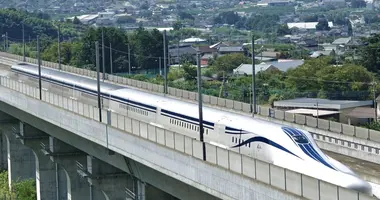Japan Train Travel Tips
Optimize your time in Japan with these travel tips to help you get around!
1. Consider buying a Japan Rail Pass if you are using the trains in Japan for more than a week. (NB These can be purchased only outside of Japan and must be reserved within 3 months of intended use.)
2. Of course, if the Japan Rail Pass doesn't fit with your itinerary plans, buying individual tickets ahead of time is another great option, as it saves time while in the country and helps with planning your itinerary.
3. Buy a rechargeable prepaid card (such as the Suica, Pasmo, or Icoca) if you will be in the same city for more than a few days and plan on using the subway a lot. A IC rechargeable prepaid card can be used almost anywhere in Japan and not just in the city of purchase. So a Suica card bought in Tokyo can be used in Kyoto, Osaka and Kobe for example. You will save a lot of time spent otherwise calculating fares, stopping at vending machines, and fiddling with small change. There is a refundable charge of 500 yen for the card itself, and you are free to top it up in increments of 1000 yen.
4. Consider buying any snacks for traveling beforehand at a convenience store. Stores inside stations are generally more expensive, especially for bento (i.e. traditional boxed lunches). However, while more expensive, station bentos, known as ekiben are often better quality.
5. Carry a memo with the name of your destination station and the name of the train line it is on written in Japanese characters. Handing a piece of paper to station staff is a lot less traumatic for both parties than trying to exchange foreign tongues.
6. Locate the fare to your destination on one of the fare charts posted above the ticket vending machines. Sometimes these charts can be confusing. On occasions there may even be more than one showing different information. You may have trouble locating the right chart, or even finding your station on the correct chart if there are no English transliterations. If so, show your destination to the station staff and ask 'ee-koo-ra?' ('How much?'). Staff can also be summoned by pressing the (usually) red 'Call' button located on each ticket vending machine.
Alternatively, buy the cheapest fare available, then when you arrive at your destination station, either use the fare adjustment machine before you exit the ticket wicket (take the ticket it dispenses to exit the wicket), or give your ticket to the wicket attendant, who will charge you the difference.
7. When entering a station, remember to remove your ticket once you have passed through the ticket wicket if using a paper ticket. When exiting, insert your ticket in the ticket wicket and pass through. Paper tickets do not come back out when you're exiting the ticket wicket. In the case of a rechargeable pass, just touch the card to the wicket when entering and leaving.
8. Take careful note of where you keep your ticket. Do not lose it. Not only will you need it when you exit your destination station, but a guard may wish to see it, particularly if you're in a reserved seat.
9. Calculate the number of stations you will stop at before reaching your destination, especially when traveling on local trains, and keep a careful count. Writing them down and then crossing them off is best. Many Japanese station platforms are sparsely signposted, most local trains do not have electronic in-carriage displays, and station announcements are often too brief and muffled to catch. A line information chart with the stations laid out is posted above at least one of the doors in each car.
10. Find out beforehand what train you can transfer to, if any, to speed your journey up. A combination of local and express trains will save you time, but knowing where to change and what train to transfer to is crucial.
11. Allow yourself a couple of extra minutes to find the right departure platform. The information you need will usually be posted on an electronic bilingual bulletin board above the main ticket wicket. However, stations can be maze-like, are not always well signposted, and station staff may be busy with other passengers, meaning you'll have to wait a little to inquire, if you have to. In other words, give yourself time.
12. Confirm once again that you are on the right platform. Even once you get to the platform that staff have directed you to, confirm it by checking the platform bulletin board or by showing the name of your destination to staff on the platform, or to other passengers. This is because staff can sometimes get flustered when dealing with foreigners and sometimes make mistakes.
13. Allow plenty of time for changing trains. If you're lucky, the line you're changing to will be on the adjacent platform; however be prepared to follow signs (hoping they don't 'fade out' as they occasionally do) for up to 5 minutes, sometimes more, often up and down several flights of stairs.
14. Understand that a degree of pushing and shoving is normal on crowded trains. Don't take it personally or let it faze you. As with anywhere, a polite attitude gets a polite attitude back.
15. Put any backpacks up on the luggage rack, especially in crowded trains. Or at least take your backpack off and hold it by hand.
16. Try to relax! Millions of people use the public transportation in Japan, meaning it's able to be understood given the right amount of preparation.















